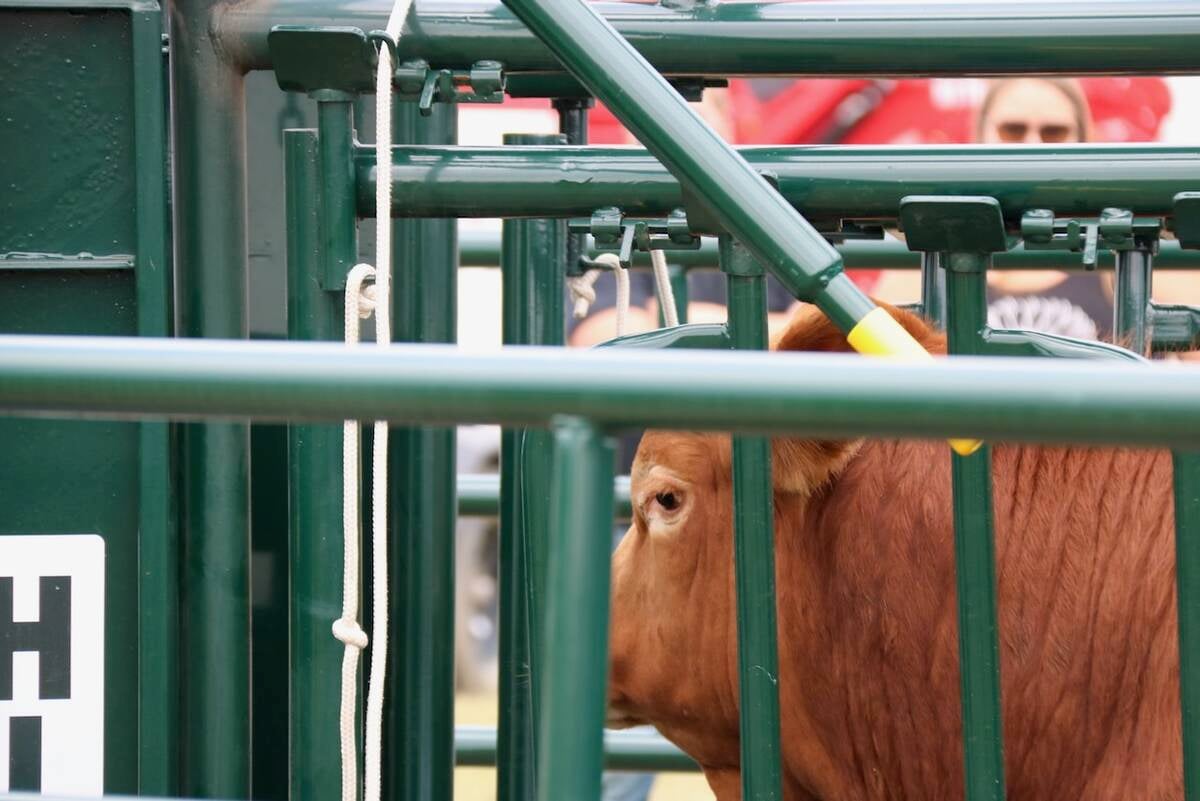HIGH RIVER, Alta. – Feeding cows every other day may offer farmers a way to save money while reducing the amount of wasted hay.
Research programs in Alberta show such a system is feasible for cow herds.
The feeding trials conducted by Alberta Agriculture, as well as an ongoing project at the western forage centre at Lacombe, Alta., show a savings in labor and feed.
During a meeting of the Foothills Forage Association, University of Alberta graduate student Sonja Lemm reported research on alternate day feeding, which could reduce overwintering feed costs by a third.
Read Also

Good handling equipment a must on cattle operations
It’s important for the safety of producers and everyone else dealing with their stock that handling equipment is functional and safe.
Lemm, a forage and livestock technician with the Gateway Research Organization in Westlock, Alta., is completing her master’s degree in ruminant nutrition.
In her three-month project, animals on a daily feeding plan received 26.6 lb. of hay and three lb. straw. Animals fed every second day were fed 52.8 lb. of hay and six lb. of straw. A comparison trial was run in 1997.
This project concluded alternate-day feeding is not recommended for bred heifers and second-calf cows because they lost weight before calving.
A similar project with bred heifers continues at the western forage research centre at Lacombe.
Researchers are monitoring about 40 bred heifers for body weight, condition scores, calving difficulty and calf birthweight.
Project leader Eramus Okine said they don’t anticipate any difficulties with the young females. The heifers were calving the week of March 16 so no solid data on performance was available.
“We expect alternate day feeding to save the producer some money,” he said.
Money saved
Lemm’s study showed just that. With labor valued at $10 per hour and a tractor and equipment priced at $35 an hour, the study showed a saving of $307, said Lemm.
This program applies best to animals on forage. It won’t work with grain-fed cattle because the rumen bacteria don’t have time to adjust.
The skip-a-day program also seemed to reduce the boss cow effect. By providing enough food for two days, the more aggressive cows ate and moved on, allowing less aggressive cows to eat later, she said.
Overall, researchers noticed no difference in intake level and rumen pH was the same as those fed daily.
Forage specialist Rob Hand said on-farm trials in 1995 and 1997 showed a 27 percent saving in labor and equipment costs.
The trial showed the cows thrived, but younger animals didn’t do as well.
The cattle received two days supply of hay on the first day.
They may have eaten their two-day supply on the first day and cleaned up remaining hay the next day or filled up on straw.
“The downside was on the bred heifers. They were not able to maintain their weight or body condition like the mature cows or even the second calf cows,” said Hand, with Alberta Agriculture.
The young animals lost about a quarter of a pound per day and the bred heifers lost about 2/3 of a body score. One body score equals seven percent of body weight.
Body score was based on measuring back fat on the short ribs.
The study found mature cows maintained their body score and some gained a little weight.
Researchers at Lacombe have cattle on alternate-day feeding but no data is available yet. They also plan to take the cattle through the calving period to see how they do.















